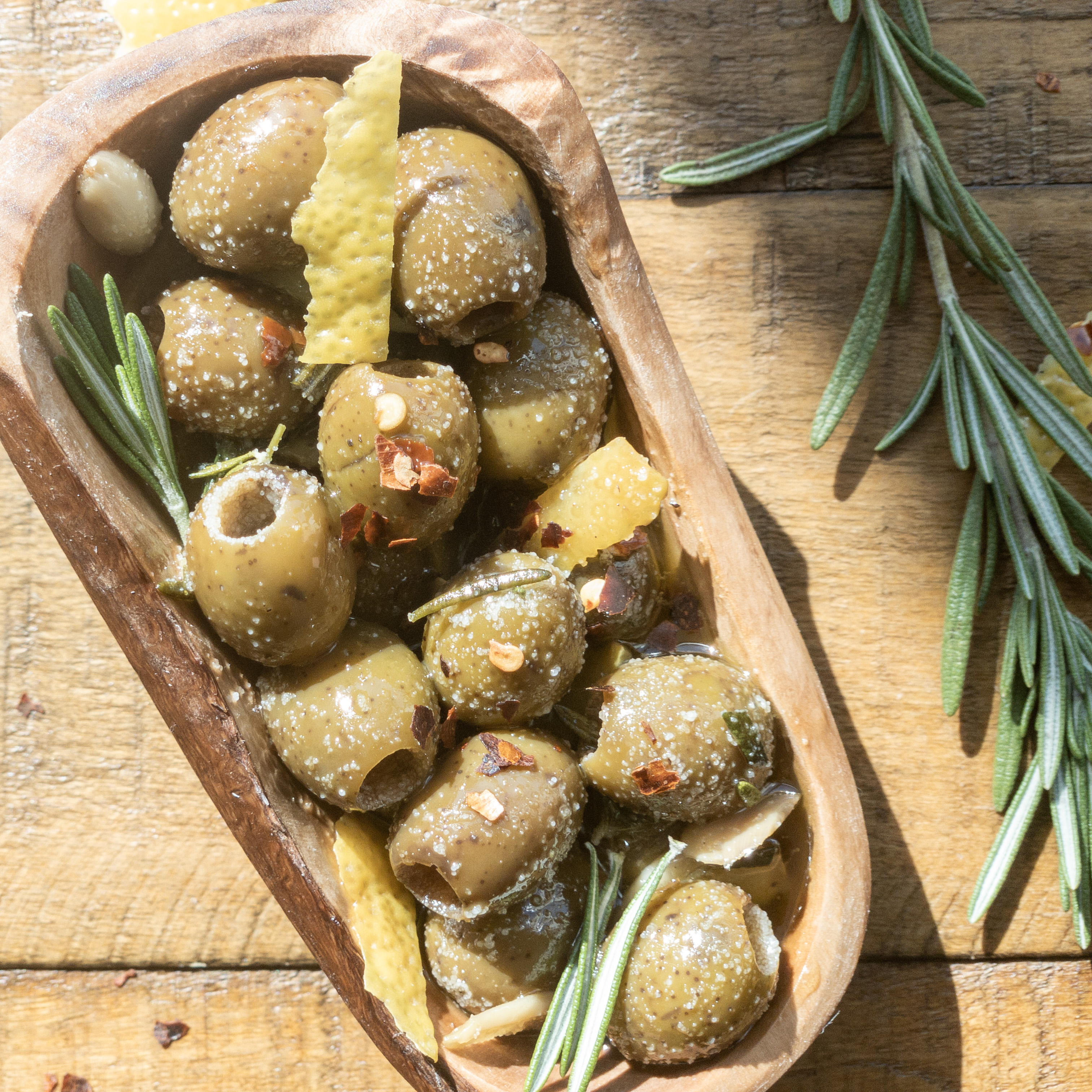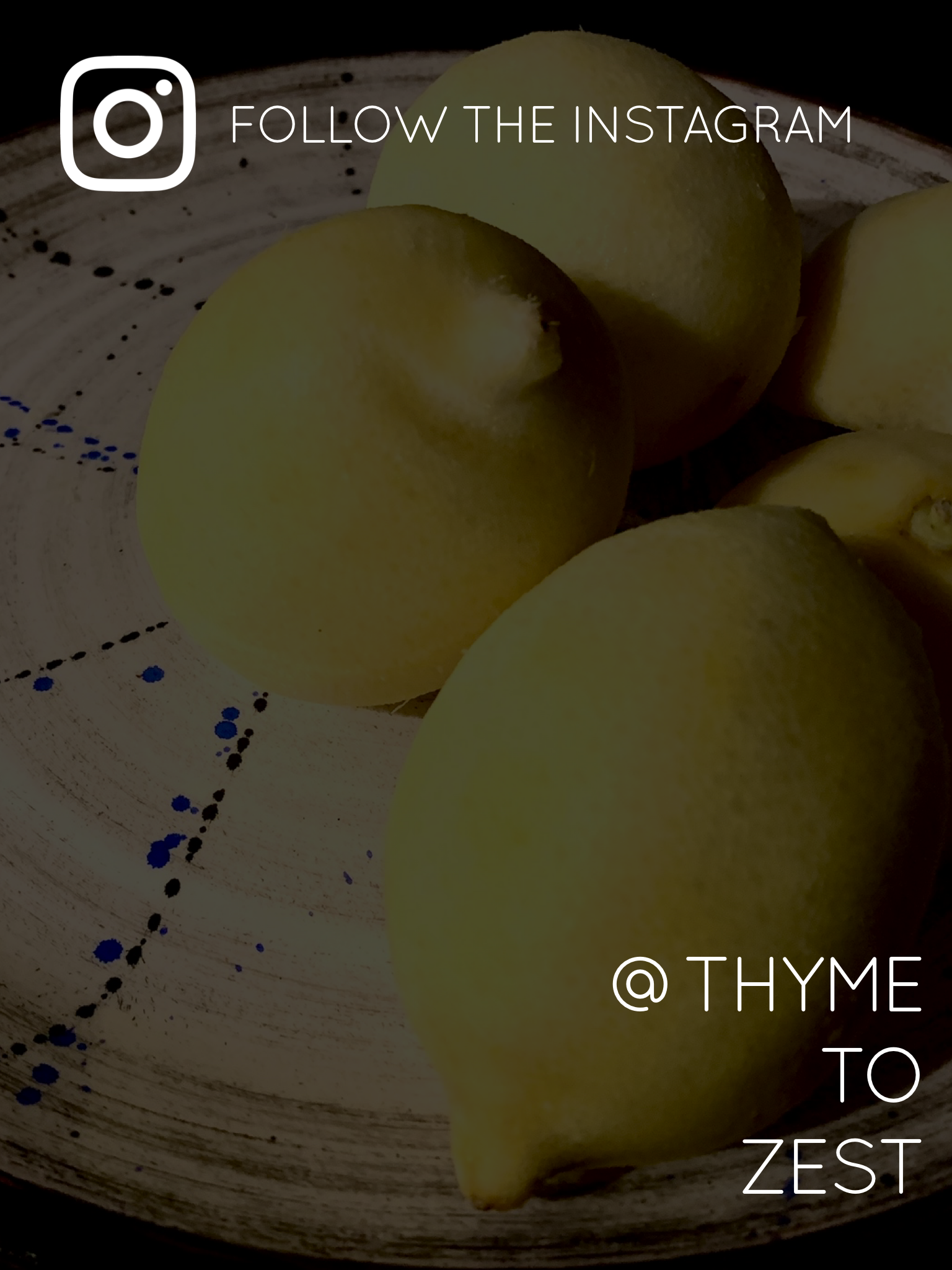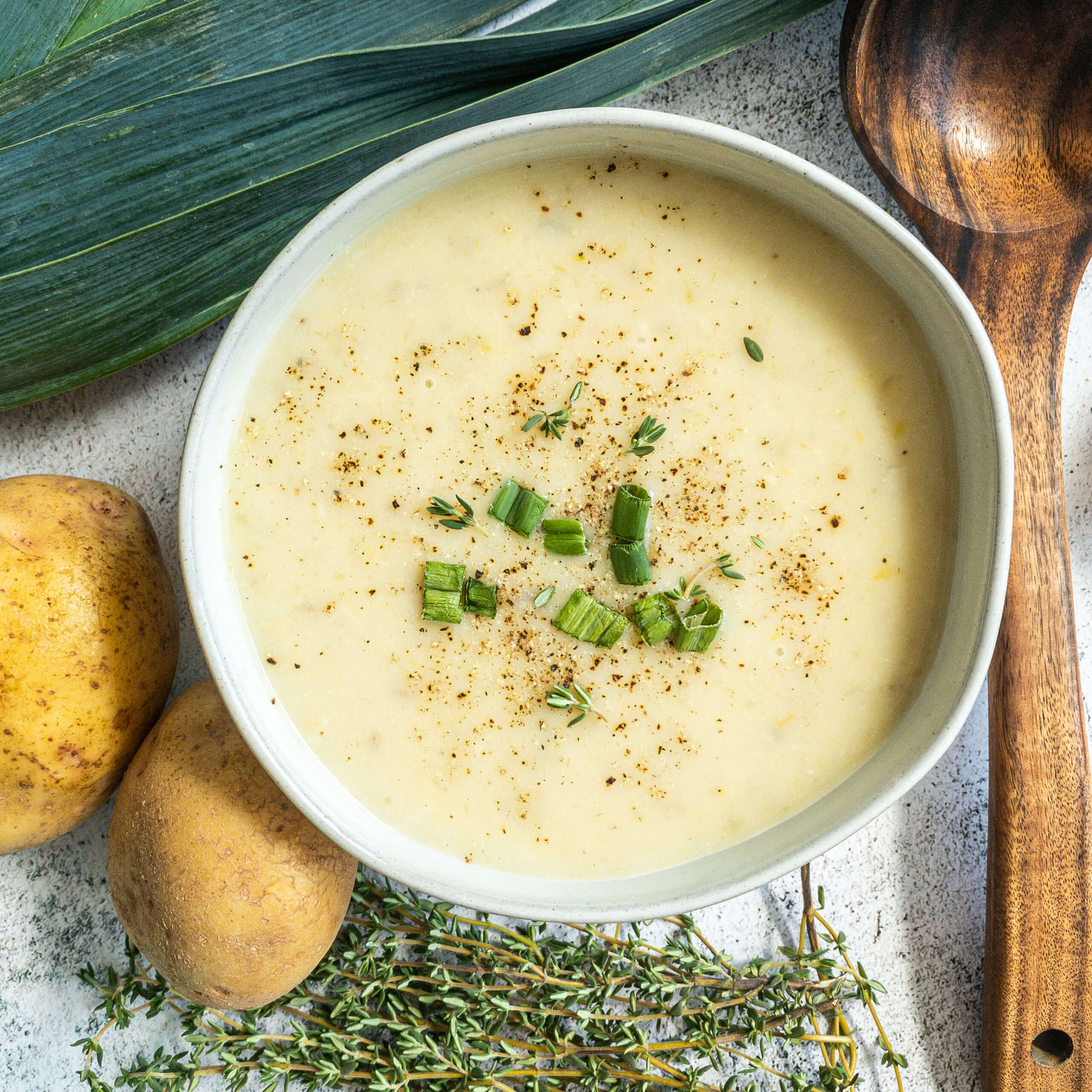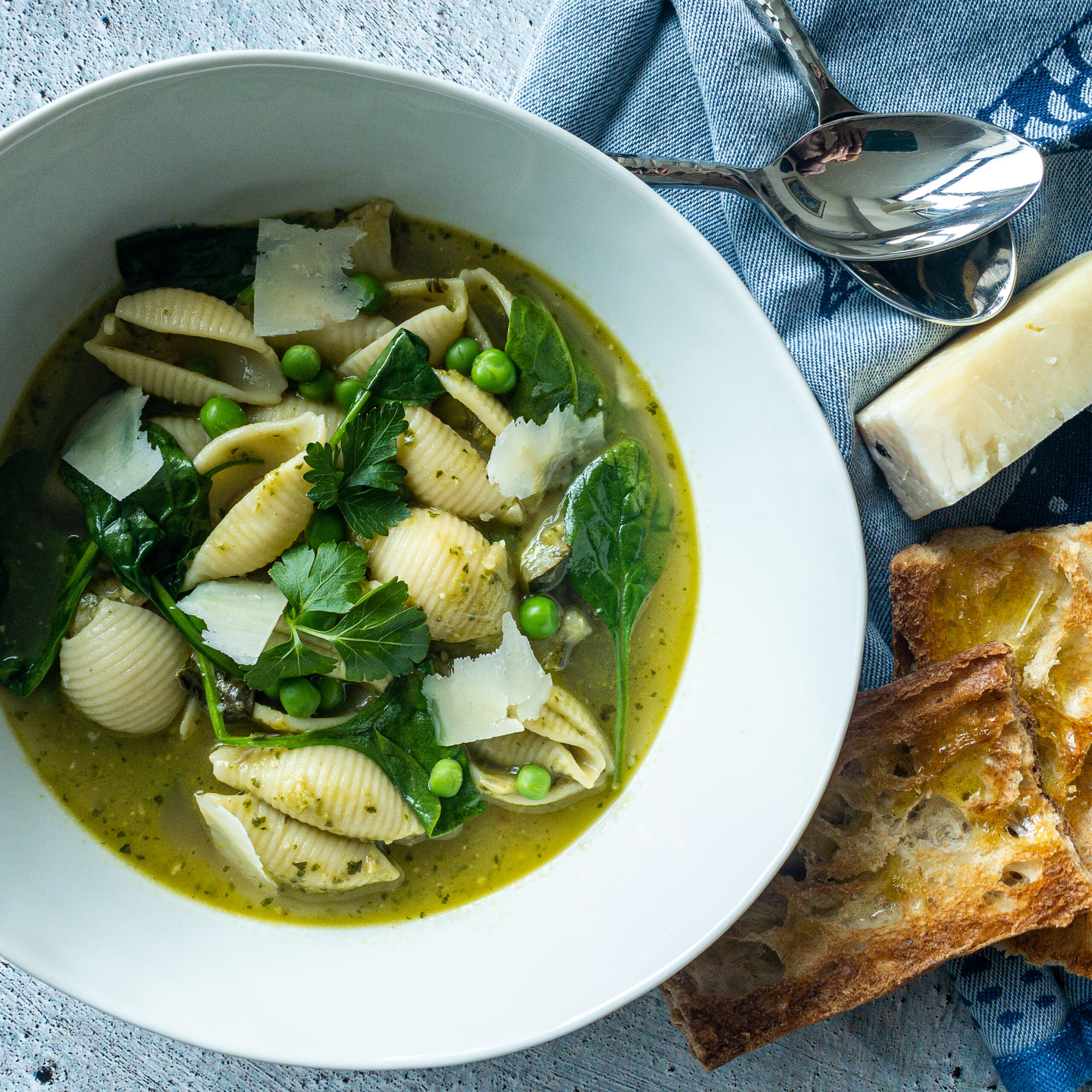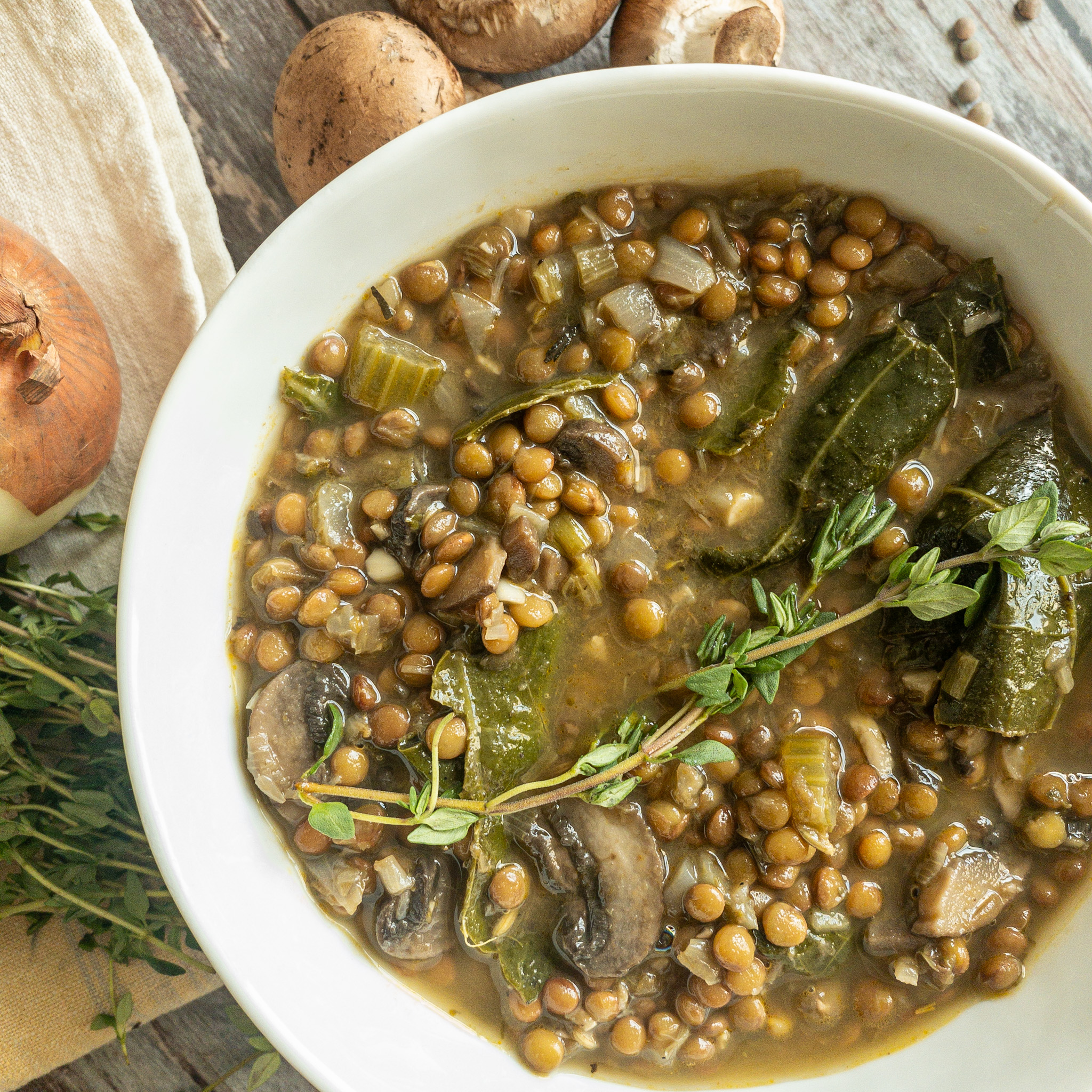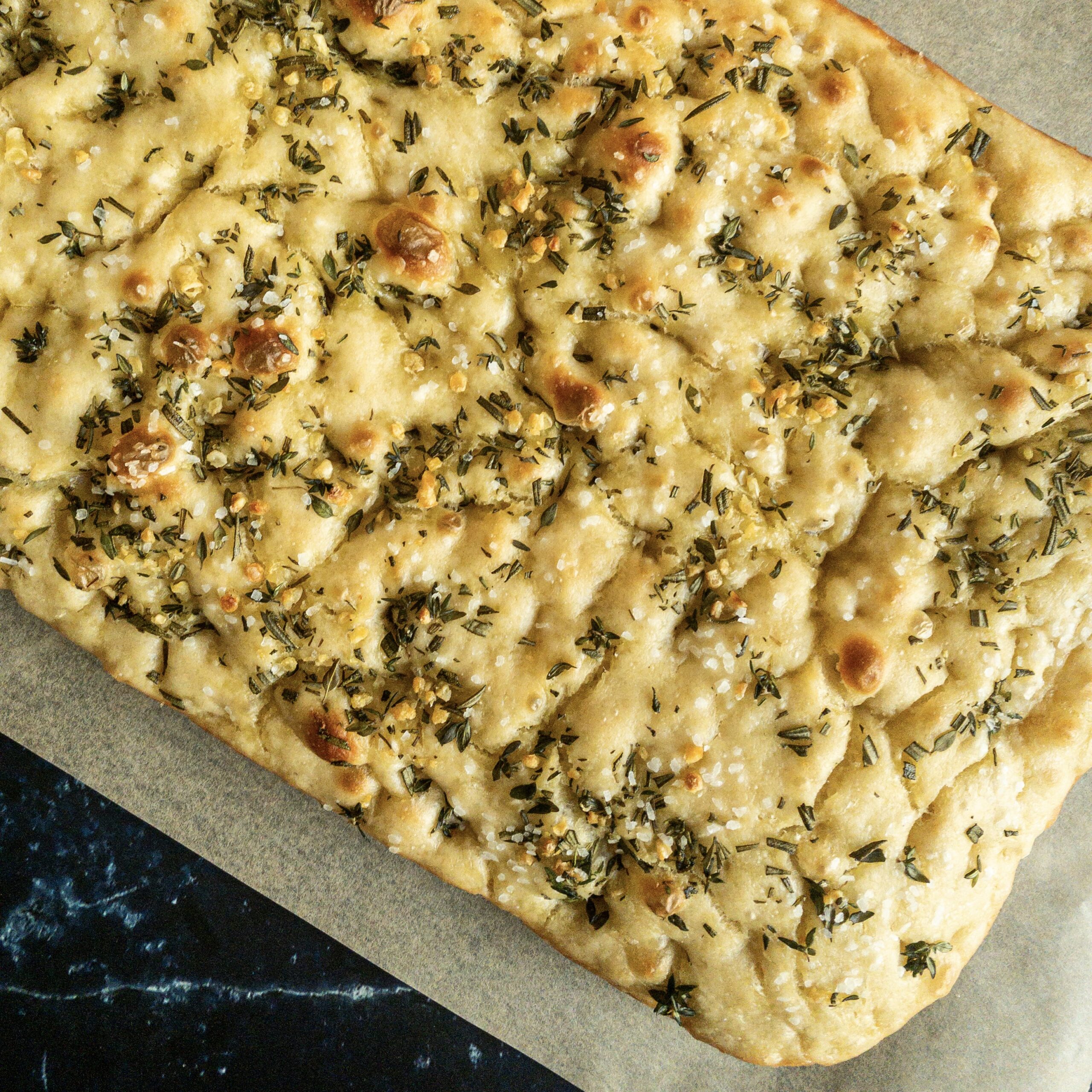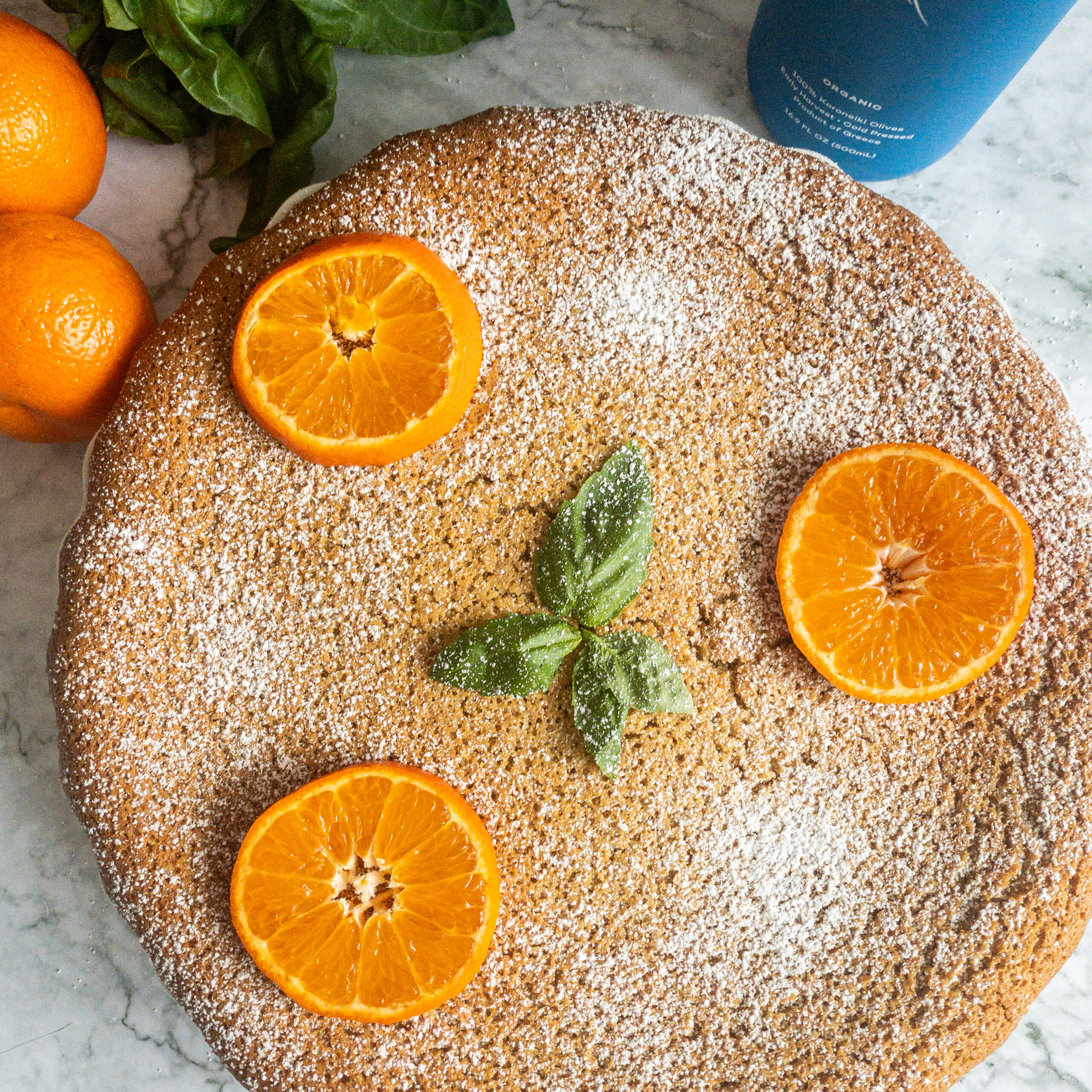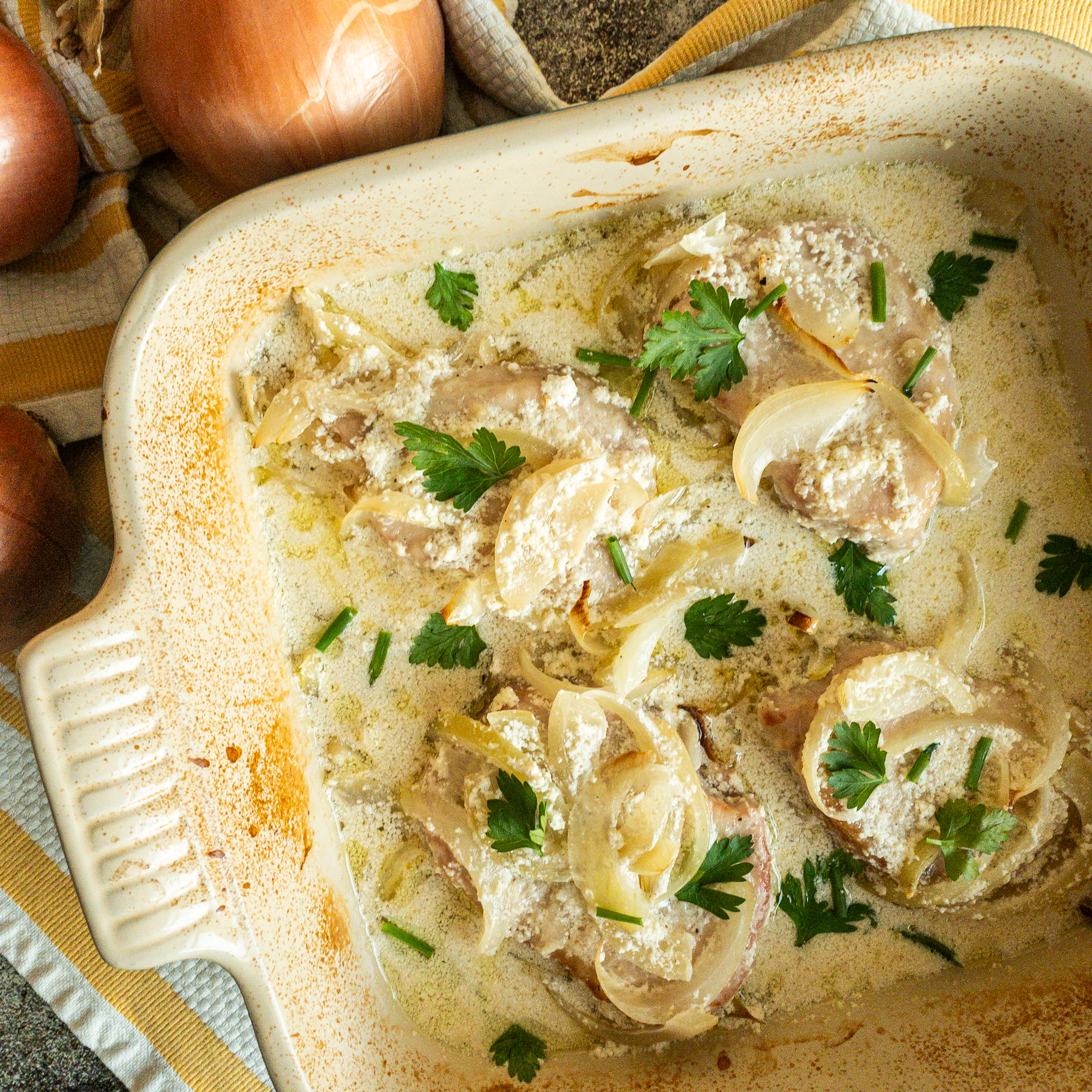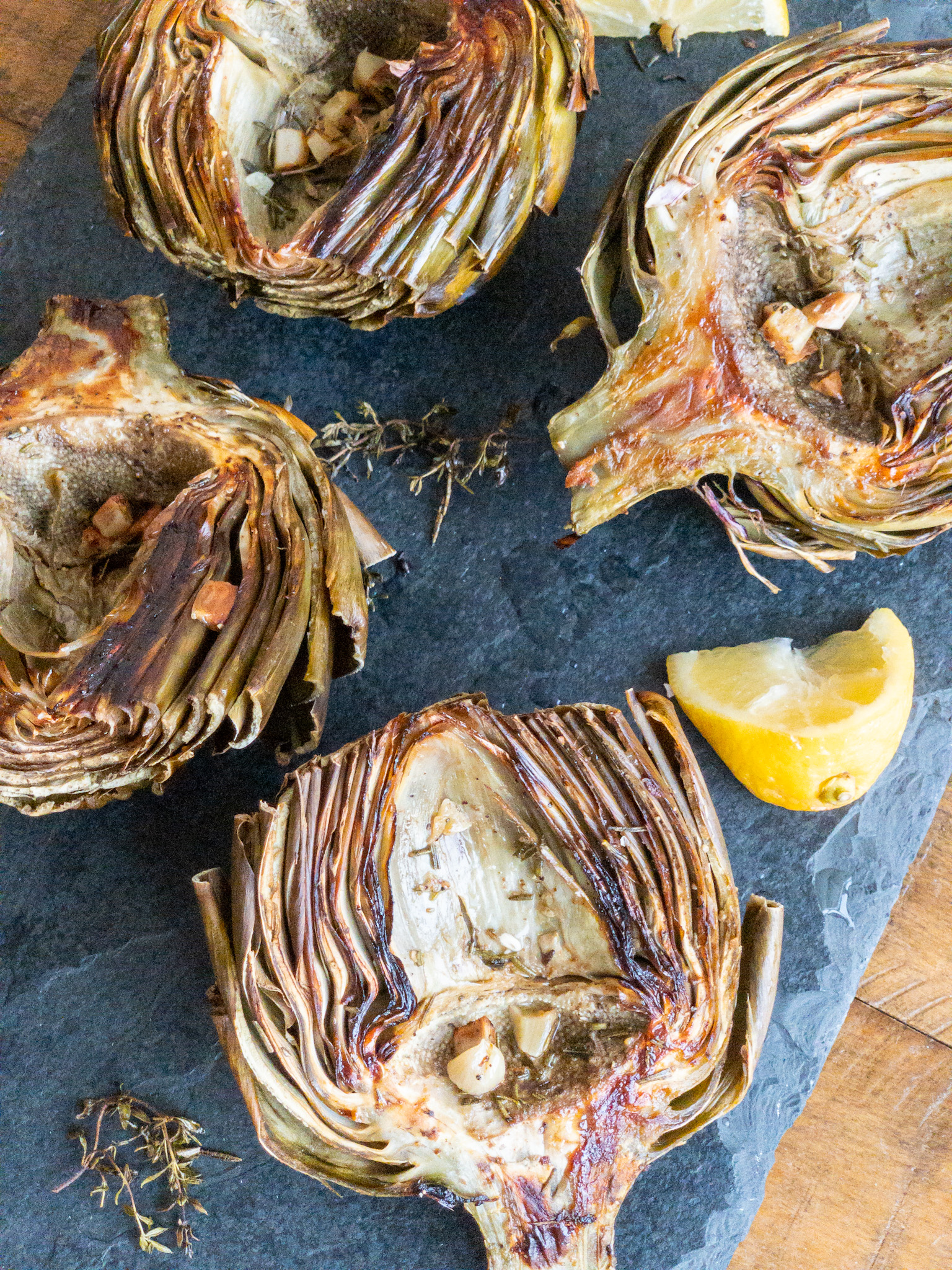
I feel like artichokes are one of the most exotic non-exotic plants you can eat. On one hand, it’s super easy to find jarred or canned artichoke hearts in the grocery store, and they’re commonly found in dips, on pizzas, or in salad bars. On the other hand, when you’re faced with a whole, uncooked artichoke, you might be thinking, “What am I supposed to do with this spiky plant that looks like it was pulled out of a desert.”
Let me tell you, your concerns are warranted and shared by others. There was even a Super Bowl commercial for Hellmann’s in which Amy Schumer, the “Fairy Godmayo,” quips that no one knows what an artichoke is. Well, as your Fairy Godchoke, I’m here to tell you all about these special plants, including how to cook them, how to eat them, and what the heck they are.
Please enlighten me
While often considered a vegetable, artichokes actually come from the plant family, thistle. Yes, they’re literally thistles. A thistle is a type of flowering plant that has a spiky exterior, protecting the blossoming interior. Artichokes, being no exception, are characterized by their large, triangular green leaves, and once bloomed, a purple floral center. When we think of the edible artichokes that we eat, this is a thistle that has been cultivated in an immature state, or before it blooms. What we eat is the fleshy bud of an artichoke.
Where do these thistles come from?
Artichokes thrive in mediterranean climates, being native to and plentiful in the southern parts of Italy, Spain, and France, as well as Egypt, Peru, and Argentina. In the US, artichokes are almost solely grown in California—mainly Monterey county—and the month of May is peak artichoke season.
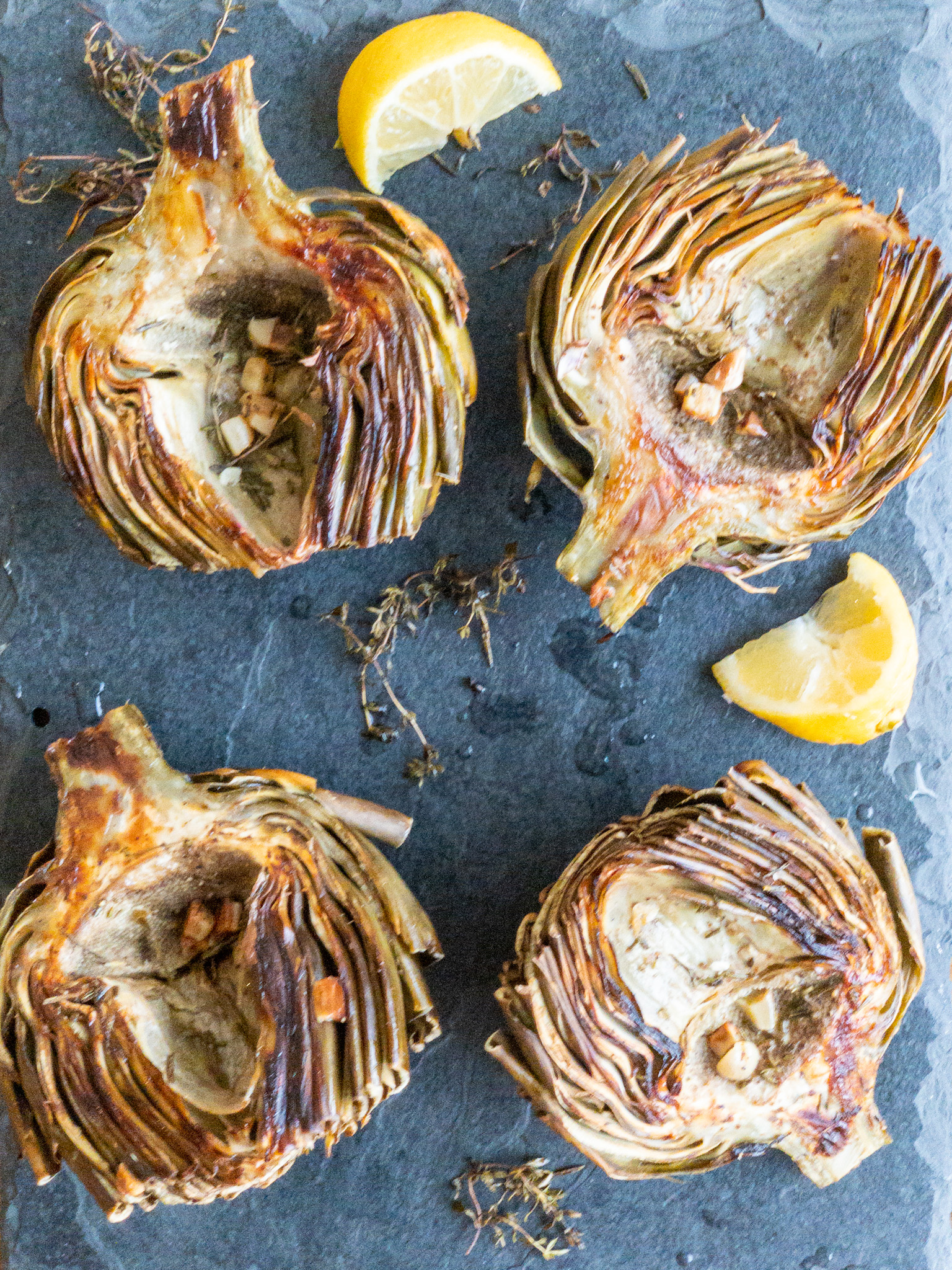
How to cook these baddies
While I’m going to go into detail on how to roast artichokes, you can also steam, simmer, or grill them. But no matter how you cook them, let’s start with the preparation process.
The first thing you should know about cutting artichokes is that they will brown very quickly after cutting them. The first time I made artichokes, I threw out three perfectly good artichokes after cutting them in half because the insides looked brown and gross.
To combat this, make sure to have a quartered lemon ready to rub immediately on the cut parts of the artichoke.
Cutting the artichoke
Make sure you have a large cutting board and a very sharp knife. Peel off any sharp leaves that are hanging off the stem of the artichoke, then cut off the very tip of the stem (not the whole thing!). Don’t forget to use your lemon wedge on the cut stem.
Next, cut off about ½–1 inch off the top of the artichoke. The top of your artichoke will now be flat. Cue the lemon! Use kitchen shears to cut the tips off the sharp, pointy leaves poking over the edge of the cut artichoke and along the bottom by the stem.
At this point, depending on how you’re cooking your artichokes, you can either leave them whole or slice them in half lengthwise. For this roasted artichoke recipe, we’ll be cutting them in half and stuffing the cavities with a yummy garlic and herb mixture.
Once you slice the artichokes in half, make sure to have your lemon handy, and use a large spoon to scoop out the fuzzy choke in the center. Once you’ve scooped out the choke, the center of the artichoke will brown fast, so make sure to rub it quickly and liberally with your lemon wedge! Now, using the recipe instructions below, you can proceed to fill your artichoke halves with deliciousness and roast them.
How to eat the thistles
Eating artichokes is an exciting experience that starts off uneventful but gets better and better as you near the center of the artichoke. You’ll start by peeling off the leaves from the outside of the artichoke and scraping off the fleshy “meat” with your teeth. What makes it even better is if you have a sauce or garlicky olive oil to dip the leaves in. The amount of substance on the leaves will increase the closer you get to the center of the artichoke.
Once you’ve gotten through the leaves, you reached the grand finale, which consists of the artichoke heart and the stem. Both are tender and delicious, making the process of cooking and eating artichokes well worth the while.
⟶ the recipe
delicious roasted artichokes

ingredients
2 large artichokes
2 tablespoons extra-virgin olive oil
6 garlic cloves, chopped
Handful of fresh thyme sprigs
Handful of fresh rosemary sprigs
Salt and pepper
Prep time
20 minutes
Cook time
40 minutes
Total time
1 hour
4 servings/2 artichokes
instructions
Preheat oven to 400 degrees.
Begin by slicing about one inch off the bottom and top of each artichoke, and pull off any small leaves at the bottom. Using kitchen shears, cut off any pointy tips of the artichoke. Rinse each artichoke and pat dry.
Using a large knife, cut each artichoke in half lengthwise, and scoop out the fuzzy center. Immediately rub all over with a slice of lemon to prevent browning. Place each artichoke half in a baking dish, cut side up, and brush both sides of each with some olive oil. Season generously with salt and pepper.
Next, stuff each artichoke cavity with the garlic and herbs, and quickly flip over each half so the cut side is facing down. Brush again with olive oil, and roast uncovered for about 15 minutes. Cover the dish with foil and bake for another 25 minutes or until artichokes and tender and you can easily pluck the leaves off from the bottom.
Transfer artichoke halves to a cooling rack and remove the herbs. Serve with your favorite dipping sauce or simply olive oil and freshly squeezed lemon juice.
⟶ recipe notes
- after removing the artichokes from the oven and discarding the herbs, you can scoop out the garlic chunks and add to some olive oil and fresh herbs to make a tasty dipping sauce


